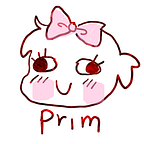Hi World
Welcome to week7. Today, Carolyn was focusing on engagement and user journey. Before we started, she reminded us of the assignment schedule same as every week and came up with the first assignment feedback. She said the advantage of the feedback is to help other groups generate ideas. It is not wrong if some students steal other’s ideas from feedbacks, but Carolyn would not recommend stealing other’s work. Same as plagiarism, the report should contain referencing, claim other voices and sources.
Carolyn recommended the referencing tools from the XD toolkit in Learning@Griffith. I also suggested the APA7 referencing sourced from Griffith University, and Mia gave another website names ‘Citation machine’.
After that, she explained about engagement in the XD element. Engage(v.) means to occupy or attract someone’s attention. It is important to communicate with people to attract our service. The element showed that it must be accessible, usable, credible, learnable and desirable to make people engaging easily. Carolyn indicated the example (below) that how any part of engagement attracts people who visit the website.
During the lecture, Carolyn created a game ‘Eggcellent engagement’ to find easter eggs inside her weekly slide and asked us at the end how many easter eggs that she hide. I like her concept to encourage students ‘to engage’ in the Engagement lecture. There were 4 easter eggs and Cherono was the one who found most of the easter eggs.
After the break, we came back to the class and Carolyn started talking about the user journey map. The user journey map is an analysation of people by creating a scenario and understand their acts and habits. It could be personas, scenarios and customer journey maps. We may think of the personas and create the scenario, then set their goals and think about the user journey map.
As Carolyn’s examples have shown, there are many sections to think of the user journey map. For instance, we must think of what the customer does, what do they think, what do they feel, ways to improve the experience and what do they need. After creating a persona and scenario, we may not know what customers thinking in the first place, but we can pretend to be in that scenario and generate an idea of what we want as the customer in the persona. Then we can create the user journey map.
Carolyn showed many user journey maps to help the students visualising how their user journey map could be. Before ending the class, she created breakout groups for everyone to discuss the process for the homework next week.
In the breakout group, we had a small meeting after the class finish to discuss how we are going to do research and present it to the classroom next week. We were brainstorming the possible solutions on the Miro board and separated duties:
1. Concept statement document (Natalia & Viv)
- Concept overview
- Type or Scope of users
2. 2 personas (Ana & Yanze)
3. A draft of the User Journey map (Prim)
For the draft of the User Journey Map, I started searching on the applications that related to our topic. I have no idea what personas that Ana and Yanze are going to make, so I created a customer journey map for a general user then roughly made a list of relevant things (below).
App: Google health, Samsung health, Ring fits for Nintendo.
A relevant app that needs the record: Flo, other self-development apps.
Users: General users
How do they feel: tried/ affect the daily activities/ give up/ keep going/ feel good/ happy with their shape.
How do they think: It’s hard to start, need good health, need more health information, need a food controlling feature.
What will they need: motivation to exercise, record and analyse health, share their result.
I must apologise to my team member that I didn’t have much time to do research properly. I had to write my ideas on the bus while travelling to work and while travelling back home. Then I put them and more ideas on the Miro board before went to bed.
